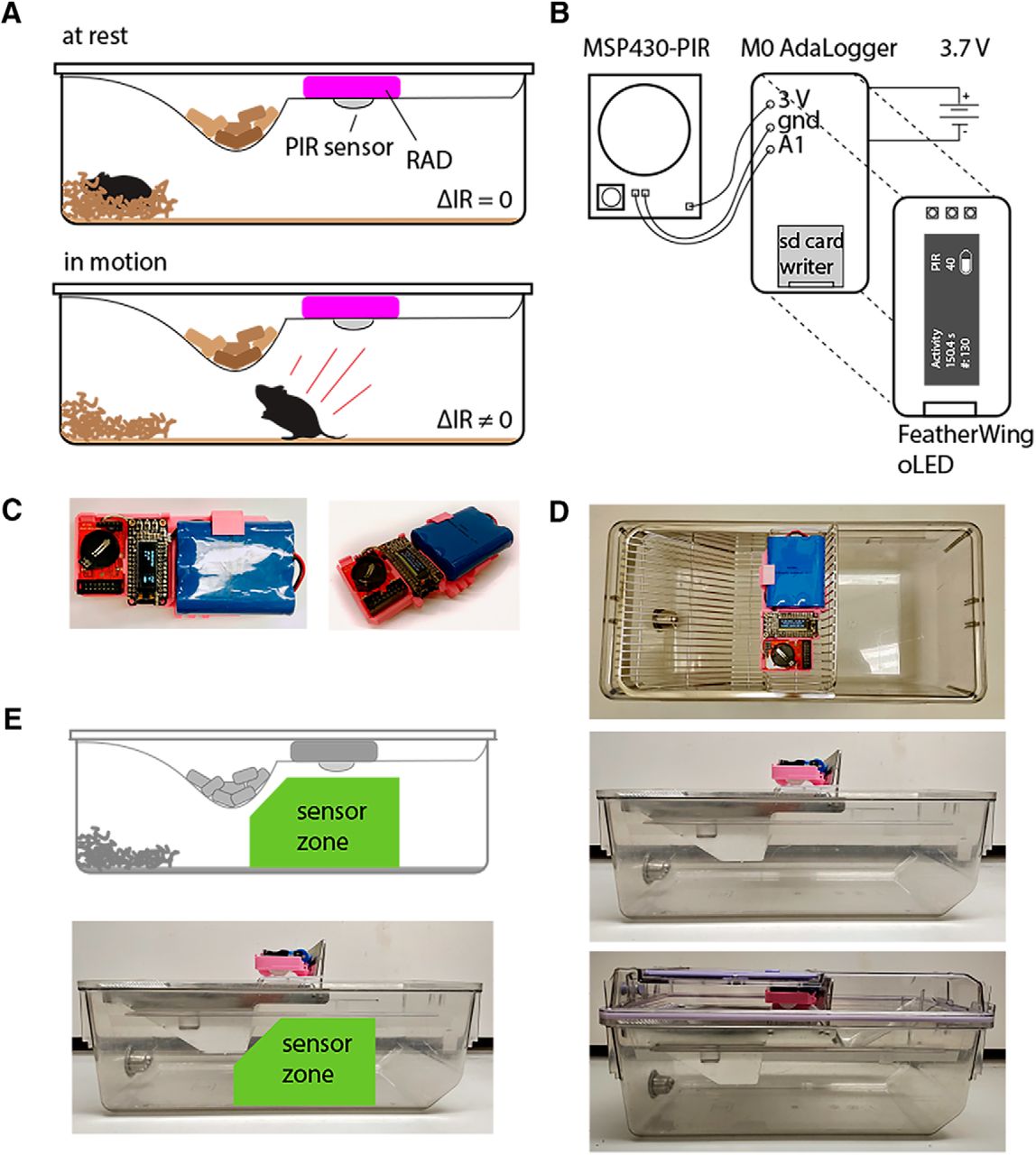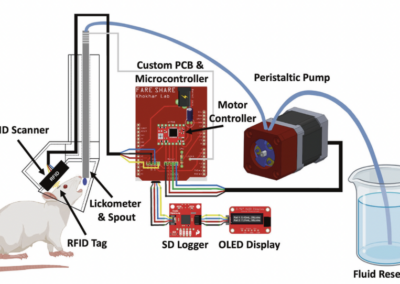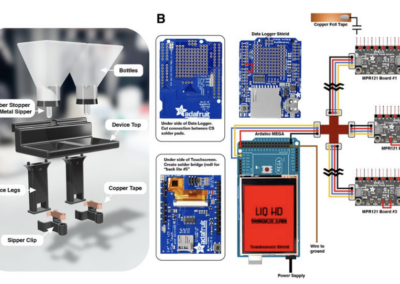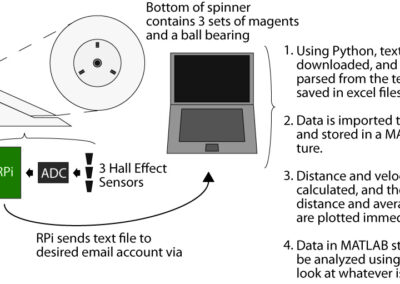In their recent eNeuro article, Bridget Matikainen-Ankney and colleagues from the Kravitz Lab have developed and shared their device, rodent activity detector (RAD), a low-cost system that can track and record activity in rodent home cages. Physical activity is an important measure used in many research studies and is an important determinant of human health. Current methods for measuring physical activity in laboratory rodents have limitations including high expense, specialized caging/equipment, and high computational overhead. To address these limitations, Matikainen-Ankney et al. designed an open-source and cost-effective device for measuring rodent behavior. In their new manuscript, they describe the design and implementation of RAD, rodent activity detector. The system allows for high throughput installation, minimal investigator intervention and circadian monitoring. The design includes a battery powered passive infrared (PIR) sensor, microcontroller, microSD card logger, and an oLED screen for displaying data. All of the build instructions for RAD manufacture and programming, including the Arduino code, are provided on the project’s website. The system records the number of PIR active bouts and the total duration the PIR is active each minute. The authors report that RAD is useful for quantifying changes across minutes rather than on a second to second time-scale, so the default data-logging frequency is set to one minute. The CSV files can be viewed and data visualized using provided python scripts. Device validation with video monitoring strongly correlated PIR data with speed and showed it recorded place to place locomotion but not slow or in place movements. To verify the device’s utility, RAD was used to collect physical activity data from 40 animals for 10 weeks. RAD detected high fat diet (HFD)-induced changes in activity and quantified individual animals’ circadian rhythms. Several major advantages of this tool are that the PIR sensor is not triggered by activity in other cages, it can detect and quantify within-mouse activity changes over time, and little investigator intervention other than infrequent battery replacement is necessary. Although the design was optimized for the lab’s specific caging, the open-source nature of the project makes it easily modifiable. This research tool was created by your colleagues. Please acknowledge the Principal Investigator, cite the article in which the tool was described, and include an RRID in the Materials and Methods of your future publications. RRID:SCR_021451 More details on RAD can be found in their eNeuro manuscript here All documentation can also be found on the project’s Hackaday.io page. Check out projects similar to this!RAD


Paper

Hackaday
Have questions? Send us an email!






